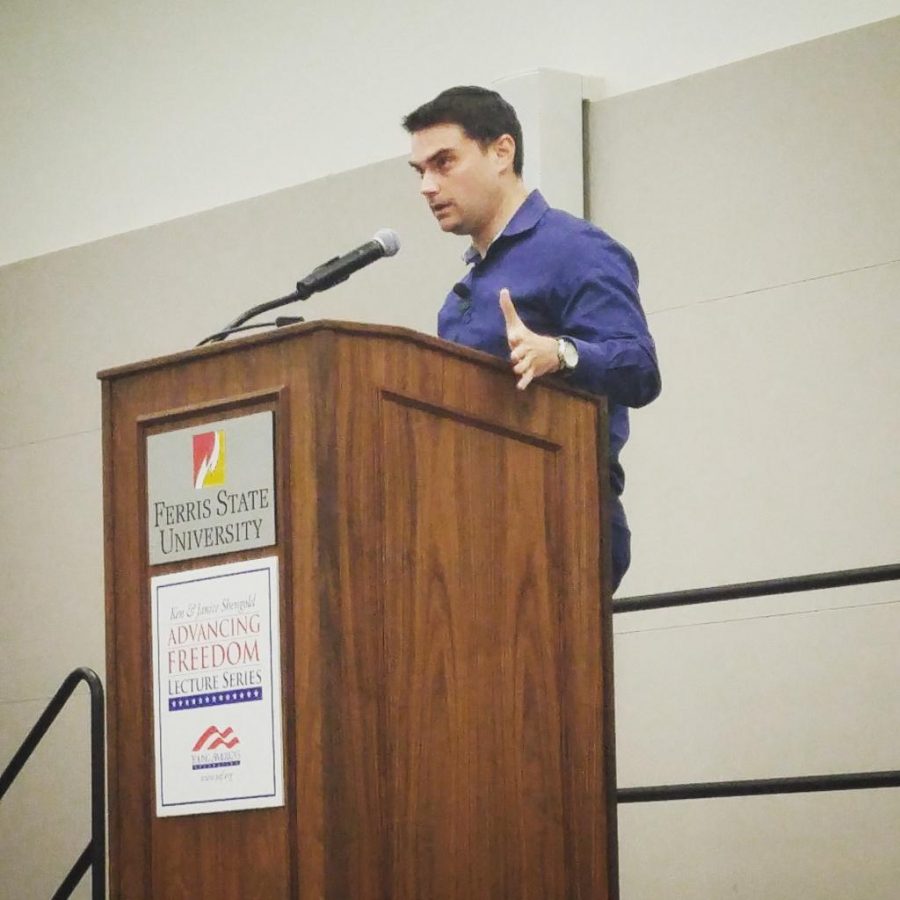On September 23, dedicated students rose well before dawn and waited for hours in the dark to get their tickets to see Ben Shapiro speak. Seating was initially scheduled to be on a first come, first serve basis, but the sheer number of people interested in the event promised mayhem at the small auditorium on west campus.
Shapiro is well known for his caustic speeches in which he attacks trigger warnings, safe spaces and the “cancer of feminism and myth of institutional racism.” It’s not hard too see why he is such a controversial figure and why there was such strong protest against him speaking at the university. But why is he so popular among right leaning students? After all, there are plenty of prominent right-wing figures in our country to support. Understanding how one of Ben Shapiro’s events typically goes is useful in understanding the cult-like fanaticism surrounding him.
Shapiro events have become their own category — they usually last for roughly an hour and a half, in which he only speaks for a third of that time. The remainder of the event is filled with a heated Q/A period, which Shapiro himself dubs the most interesting and “everybody’s favorite” part.
The most common argument from students during this period is that Shapiro lacks empathy and fails to consider the individual experiences and disadvantages of certain groups. Shapiro criticizes the student for being too idealistic and regurgitates a slew of facts, during which the student has no time to consider or verify. They typically double down on their argument and Shapiro emerges the victor. To most right wing students this is highly satisfying and all the evidence they need to confirm the supremacy of their “fact based ideology” over the left’s “identity politics.”
The reason students on the right get so much glee out of these events is the lack of conversation or debate between students in general. We have all moved so far to each end of the spectrum that most conversations about current political issues don’t even have the possibility of common ground and end in insults. The event promises a platform in which students have to engage with Shapiro in a formal manner, creating a strange world in which Shapiro functions as an intellectual hit-man for students on the right.
Shapiro insists on the importance of these types of events, specifically the importance of being exposed to beliefs and opinions that you disagree with or find offensive. He touts his events as an important dialogue in an increasingly divided America.
Rather than promoting a dialogue, Ben Shapiro appears to be capitalizing on the current division in American politics. He recognizes that the left and right are approaching social and political issues from two entirely different perspectives — he recognizes the inherent weakness of the lefts position in an environment where he controls the rules of the debate and takes advantage of it. He insults the left for the way they approach problems, calling them “snowflakes” and “babies,” and refuses to admit that there’s an element to a social problem that he can’t understand… some dialogue.



Arthur Fonzarelli • Oct 3, 2017 at 8:40 pm
I’m curious as to how dialogue is encouraged by the anti-Shapiro protestors who demand that he (the “caustic” Shapiro) not even be allowed to speak in the first place. Those on the Left insult him for his stance, calling him such things as “Fascist” and “Nazi.”
Please enlighten me, objective journalist, how dialogue is offered by either side? Well you make it clear that Shapiro’s side does not, so I guess I am just asking how the Left provides an avenue for dialogue.
Mb • Oct 2, 2017 at 9:01 pm
Obviously you are a snowflake. -“inherent weakness in the lefts position”. That is why they lose.